Affiliate marketing is still one of the most profitable online business models and it’s much easier (and cheaper) to get started than alternatives like e-commerce. And though the niche-website game has gotten more competitive than when I started 10 years ago, affiliate marketing on Youtube is still wide open, and massively profitable.
And though I run (multiple) profitable affiliate websites, I also use Youtube affiliate marketing to gain exposure, generate sales, and grow my brands. In fact, Youtube is a huge part of my affiliate strategy for this website, which is now my main focus.
In this guide you’ll learn:
- How to get started affiliate marketing on Youtube
- Where to find the right affiliate products for Youtube
- What type of videos to create
- How to convert Youtube viewers into affiliate sales
And before we dive in, let me clear one thing up. You don’t even have to show your face on camera.
In fact, I have two Youtube channels where I do screencast tutorials (no video) that have earned more than $100,000 in revenue (combined) since they launched.
What is Youtube Affiliate Marketing?
Affiliate Marketing is a business model where you promote a product or service and you receive a commission or percentage of the sale in exchange for customers you refer.
It’s a great business model for both the brand you’re promoting and you the affiliate marketer.
Benefits of affiliate marketing for brands
In fact, many SaaS brands have built themselves to 8 or even 9 figure (1-billion) dollar businesses using almost exclusively affiliate partnerships for growth. The VPN industry is a great example here, and companies like NordVPN and Private Internet Access have incredibly popular programs.
Benefits of affiliate marketing for Youtubers
You may not realize it, but affiliate marketing is everywhere. The WireCutter, TechRadar, Forbes, BobVila and Lifewire earn millions with affiliate marketing.
And yes, your favorite Youtube is probably doing it to, promoting everything from the latest camera gear (Amazon affiliate program) to Hotels (booking.com), SaaS products (Grammarly) and so on.
Affiliate linking on Youtube
Affiliate links are the magic that makes affiliate marketing work.
Whenever you join an affiliate program, you’ll receive a custom link that has a unique identifier (affiliate ID) attached to the link. This is how the company knows which affiliate referred each specific customer (and how you earn money).
Does Youtube allow affiliate links?
Yes. Youtube does allow affiliate links and affiliate marketing on the platform. There are some important rules to be aware of, especially regarding FTC disclosures.
Youtube rules regarding affiliate links:
- No Spam
- If the content is a paid promotion it should be disclosed
- No linking to malicious or NSFW websites
- No redirecting in-video card links to affiliate offers
Where to promote affiliate links on Youtube?
There are a number of different ways to promote and share your affiliate links on your channel. Here are some of the best locations (all of which on use personally).
1. In your video description
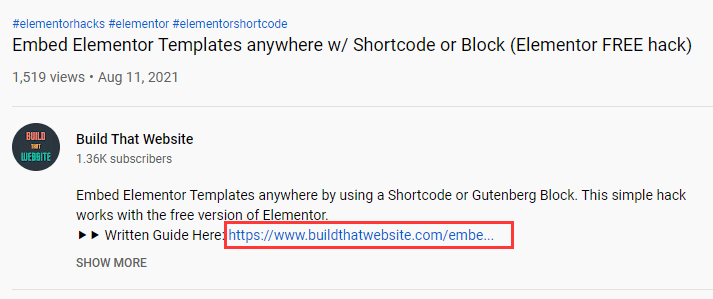
Place your primary call to action (or link) in the first 3 lines of your Youtube description. This will ensure it’s always visible beneath the video (on Desktop only, not mobile)
You can also place additional affiliate links deeper in your description. You’ll often see Youtubers add links to their studio equipment (camera, lights, microphone) in the description.
2. In the pinned comment
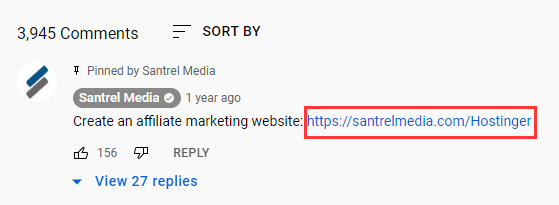
On each video, you get to ‘Pin’ one comment to the top of the comment feed. This is the first comment everyone sees and is always visible directly below the video on mobile devices.
So comment on your own video, use a short ‘call to action’ and add your affiliate link.
3. In the video itself
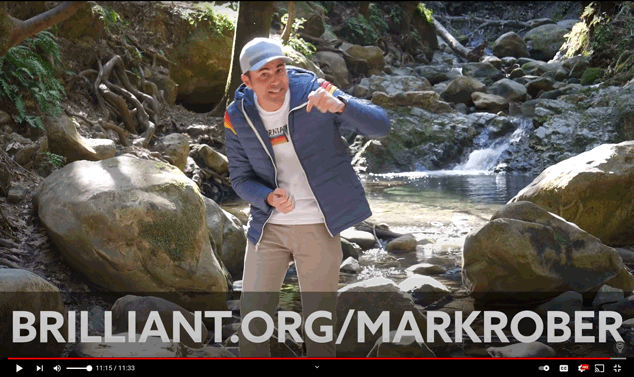
Even though affiliate links tend to be unpronounceable gibberish, you can use a link shortening tool like GeniusLink to format your link in a way that is short and memorable.
If you have a WordPress website already, this is even easier (and free). You can simply use a link cloaking plugin like ThirstyAffiliates or PrettyLinks to format your affiliate link as a nicer URL.
Like this link on used in my WPAstra tutorial:
https://buildthatwebsite.com/astra
Once you’ve got a shortened URL, there are several ways to add it to the video:
- Say it out loud “go to mydomain.com/link to signup!”
- Add to your end screen
- Overlay it on your video – Put a little callout box next to (or below) the main video content, showing your link.
What types of videos convert best?
After 8 years and 7-figure views across my multiple Youtube channels, these are the types of videos that I’ve found effective for promoting affiliate products.
- Product Review
- Product Comparison
- Product Roundups
- Unboxing Videos
- Tutorials (where a product is the solution)
Let’s look at some examples of each:
Product Review / Product Comparison
Review and comparison videos are perfect for affiliate marketing because they’re near the bottom of the sales funnel. People watching a review of the Rode Podmic, for example, are already looking to purchase a microphone. They just haven’t decided which one (yet).
This is a great opportunity demonstrate the value of a product, get the click and convert the sale.
Here’s a great example from Podcastage, one of the best mic reviews on Youtube.
Not only does he thoroughly test the mic in a variety of scenarios, he also entertains you while he does it. I always look forward to his unscripted guitar riffs and off the cuff lyrics in each video.
He also compares the microphone to competing products and tells you who (if anyone) should purchase this specific microphone.
And then, of course, he kindly places affiliate links near the top of the video description, above the chapter markers.

Roundups and ‘Best Product’ videos
This is a classic affiliate format that works both bloggers and Youtubers. And it’s really simple to pull of.
The video format is usually some variation of :
“Best Products for Use Case“
For example:
- Best Laptops for Gamers
- Best Microphones for Youtube
- Best Photo Editor for Beginners
It’s a great mid-funnel keyword where viewers and have a problem and they’re looking for a product to solve it, but aren’t quite sure which brands or products are best.
Videos like these get tons of views and you get to generate sales for multiple products instead of just one (as in a review vide).
This ‘best entry-level mirrorless camera’ roundup video from DPReview has over 300,000 views.
And you guessed it, there are links for each product at the top of the video description.
Interestingly, they aren’t direct affiliate links but rather links to the (very detailed) review for each camera on the DPReview website. Each review article contains multiple affiliate links to buy the camera when you’re ready.

Tips to convert more Affiliate Sales from Youtube
Featuring affiliate products in Youtube videos is easy, but actually getting people to purchase through your links?
That’s hard.
Here some battle-tested strategies to earn more revenue per view and convert more of your audience into customers.
Tips to improve affiliate conversion rate on Youtube:
- Clear call to action
- Coupon Codes
- Email Marketing
1. Include a clear CTA early in your Video
If you want people to click your affiliate link and generate referrals, you’re going to need to actually tell them to do it. Your video introduction is a good time to disclose your affiliate relationship and tell viewers where to find the link(s).
Some Youtubers shy away from mentioning the financial aspect of affiliate links, but you shouldn’t avoid it. In fact, if you’ve got an engaged following, they want to support you. So tell them how & why to buy through your links.
2. Use Coupon Codes

If you’re featuring a brand that manages their own affiliate program, you may be able to negotiate a special coupon code, just for your audience. Not only does this make the offer more enticing, but it also dramatically increases your changes of getting credit for the eventual sale.
A 20% coupon code can easily 2x or 3x your conversion rate.
3. Build an Email List
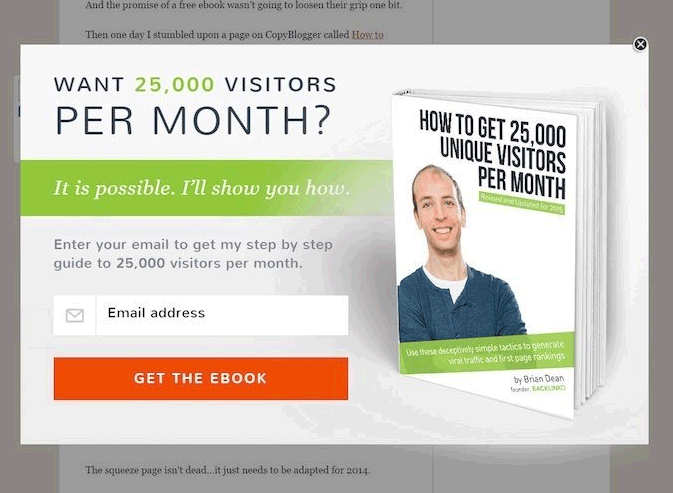
Most viewers aren’t going to be ready to buy anything the first time they come across your channel. But if you can drive them to an email list, you can nurture them with value-driven content until they have a pain point that motivates them enough to buy.
An email list is the time-tested best way to supercharge your Youtube sales funnel.
How to build an email list on Youtube:
- Offer a free lead-magnet in your video (course, template, cheat sheet, e-book)
- Users must opt-in to your email list to receive the freebie
- Follow up with a short sequence of relevant emails to convert a quick sale
- Continue to engage with frequent (or occasional) value-driven emails
Start your email list for free: Try Convertkit (free up to 1,000 subscribers)
Is Youtube Affiliate Marketing Profitable?
Monetizing your Youtube videos with affiliate links can be extremely lucrative, but that doesn’t mean it’s easy or quick to start raking in serious profits.
Your affiliate earnings on Youtube are directly correlated to the size and reach of your Youtube channel and how effectively you convert your audience into customers. It’s pretty simple, the more views you get, the more you earn.
Estimating earning potential
There are several factors that determine how profitable your affiliate marketing efforts will be on Youtube:
- Views. How many views your affiliate videos get
- Engagement. How engaged is your audience with your content? (do they see the offer).
- Relevance. How relevant the product is (does it address a pain point of the viewer)
- Commission. How much you earn per sale
- Conversion Rate. What percentage of viewers click your link and buy the product.
All things being equal, more views is obviously better. But that doesn’t mean views are the only goal. All the pieces of your funnel need to work in harmony to maximize profit.
It’s quite possible to earn substantial revenue with a small audience of they are highly engaged, your offer is relevant, and the commission per sale is high.
Here are two real-world examples from hypothetical Youtube channels:
Channel 1 (small, less-engaged):
- Views: 10,000/month
- Conversion Rate: 0.2% (1 sale per 500 views)
- Average Commission: $5/sale
- Monthly Earnings: $100
Channel 2 (larger, engaged audience)
- Views: 100,000/month
- Conversion Rate: 1% (1 sale per 100 views)
- Average Commission: $20/sale (high-end physical products or SaaS)
- Monthly Earnings: $20,000
As you can see, the larger channel has 10x the views but is earning 200x the profit because their sales funnel is more effective.
What are the average affiliate earnings per video view?
I’ve run 4 different Youtube channels in multiple niches, all monetized with affiliate offers. In my experience, the average value per view falls between $0.02 and $.20 per view.
Yes, that’s a wide range, but it’s realistic too. Not all videos convert at the same rate. Bottom-of-funnel topics (product comparisons) and problem oriented tutorials convert at a much higher rate. And of course the commission per sale makes a huge difference.
Estimated earnings/view by video type:
- Low end ($.02-$.05): Top of funnel videos, non-targeted offers, physical products (amazon associates)
- High end ($.06-$.25+): Bottom of funnel videos, high-commission SaaS products.
How many views & subscribers to earn a full-time living?
The median income in the USA is around $42,000 for individual earners over age 15. So how hard would it be to match that income from Youtube alone?
Here’s the basic formula to estimate affiliate earning potential on Youtube:
Earnings = Views x Conversion Rate x Average Commission
So if we estimate the conversion rate and average commission, we can easily calculate the number of views needed.
Let’s run some numbers, in a few different scenarios. Note, I’m only counting views for videos that mention at least one affiliate product.
- Conversion Rate: 1/100 views
- Average Commission: $15
- Earnings/view: $0.15
- Views needed: 280,000
- Conversion Rate: 1/400 views
- Average Commission: $8
- Earnings/view: $0.02
- Views needed: 2,100,000
Which Affiliate Programs are best for Youtube
There are literally thousands of affiliate programs and products available for you to promote. But with so many options, it can feel overwhelming to get started. Plus, many brands and networks won’t work with creators who have a smaller audience.
These are some of the best Youtube affiliate programs for smaller channels.
Amazon Associates
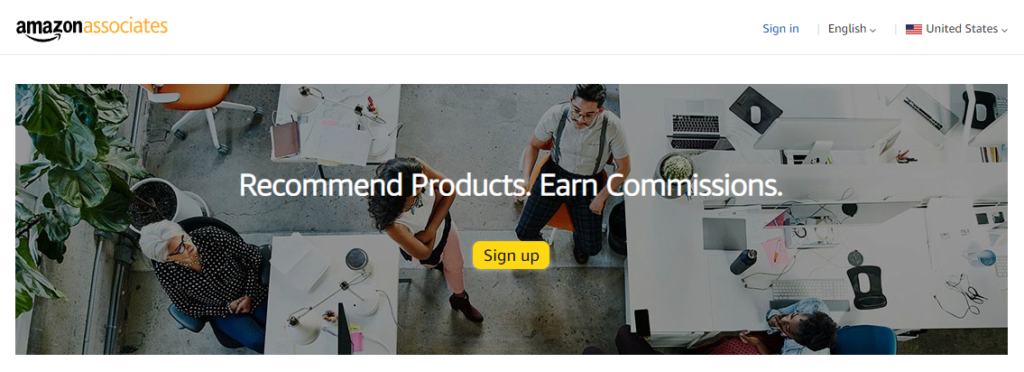
Cookie duration: 24 hours
Commission rate: 2-10% (4% average)
Amazon Associates is the official affiliate program of Amazon.com They offer commissions ranging from 2-10% on nearly every product in their fast catalog. Better yet, you get credit for every product the visitor purchases within 24 hours, not just the one you linked to.
Amazon Associates works for almost any niche or channel. There’s always gear to buy!
Approval is incredibly quick and easy, just make sure to get a sale within 6 months or your account will be closed.
CJ.com (Commission Junction)

CJ.com is one of the largest networks and the affiliate hub for hundreds of name brands that you know and trust. Getting in is relatively easy, even with a small audience.
Once approved, you have to apply to each program individually. Many huge brands won’t work with small creators, but plenty will. And as you start to build an audience, brands will actually reach out to you for partnership.
ShareASale
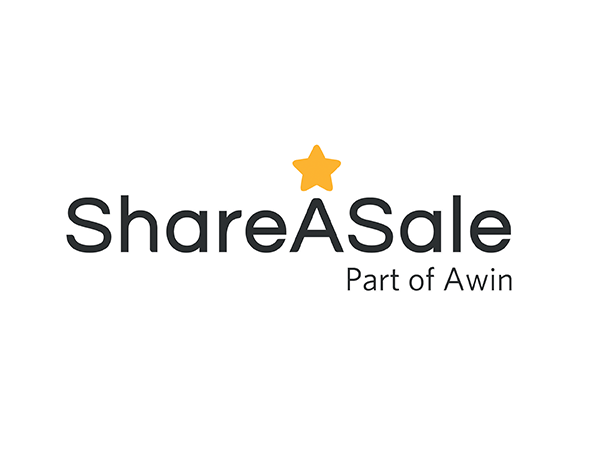
Shareasale.com is another network like CJ, but with smaller brands (and often fatter commissions). The interface isn’t as polished as CJ’s but the selection of programs is decent and many are receptive to smaller Youtubers.
I personal promote several Shareasale partners on my own channel, including WP-Rocket and WPEngine.
Booking.com
Travel and vlog channels will love Booking.com which has a lucrative affiliate program with decent commissions (roughly 4% of a booking). The main downside is you only get credit for sales completed immediate after your click (in-session).
A more generous alternative is hotel.com’s 7-day cookie duration (via cj.com).
SaaS Products
If you check what products are being promoted on top channels, you’ll see a ton of SaaS (Software as a Service) brands.
That’s because SaaS tools pay some of the highest commission rates in the industry. Even better, many programs offer recurring commissions for the lifetime of the customer.
That means each sale could be worth $25, $100, or even $300+ over the lifetime of your referral.
Here are some popular examples:
SaaS affiliate programs for YouTube
- Web Hosting: Hostinger, NameHero, Cloudways
- Website Builders: Weebly, Wix, Webflow
- Creative Software: Adobe Creative Cloud, Canva
- Productivity: Grammerly, Brain.fm,
- Youtube Tools: VidIQ, Tubebuddy, Envato Elements
- Digital Security: NordVPN, Lastpass
The best SaaS products are tools that address a specific pain point your audience has. In my experience, detailed tutorials showing a specific tool in action convert really well.
For example, my video on how to start an email list using Convertkit with Elementor Pro is currently earning around $50/month with fewer than 300 monthly views (around $.17/view).
When you’ve got a product that matches your audience, you don’t need a ton of views or a huge channel.
Advantages of Affiliate Networks
If you’re just getting started, it’s a good idea to join one (or two) affiliate networks like CJ, or a massive program like Amazon Associates that offers every product under the sun.
Having all your payouts and affiliate links managed in one place is a real time saver, compared to managing multiple (even hundreds) of one-off affiliate programs.
I should know, I’ve currently joined more than 20 individual affiliate programs for buildthatwebsite.com, many of which are only mentioned on one or two pages. It’s a hassle to mange, and extra work come tax time.
Examples of Affiliate Marketing on Youtube
Here are some more examples of Youtubers (big and small) earning a living from affiliate products.
Nick Nimmon
- Product: TubeBuddy (SaaS)
- Subscribers: 800,000+
- Estimated earnings: $250,000/yr
Nick Nimmon is known for his short, value-filled tutorials on how start and grow a YouTube channel. His audience is full of new and established creators who want one thing, to gain more subscribers, views and revenue on Youtube.
The Product: Tubebuddy is a perfect match for his audience. It’s a tool that helps with Youtube SEO, keyword research, and even A/B thumbnail testing for faster growth. And Nick is living proof that it works. He mentions it frequently, at least once in (most) videos.
The Earnings: With subscriptions that range from $10-$50 per month and 30% recurring commissions for the life of the customer, Nick is raking in six-figures annually even if just a fraction of his audience buys through his link.
Pat Flynn
- Products: Convertkit (SaaS), WP-Engine (hosting), Podcasting gear (Amazon)
- Subscribers: 350,000+
- Estimated Earnings: $300,000/yr (just from Youtube)
Pat Flynn is the founder of the Smart Passive Income brand, and one of the shining examples of ethical affiliate marketing. He has been an inspiration to me personally, via his blog and podcast.
His business has grown from a small niche site into a 7-figure empire (maybe 8 by now). Most of his affiliate earnings come from the blog and podcast, but he’s definitely earning a nice chunk from YouTube as well.
He does a combination of product reviews (for tools he users personally) and in-depth walkthroughs. What sets Pat apart is the trust he has built with his audience through years of providing high-value content for free.
The Capsule Suitcase
- Products: Luggage (Amazon and brand-specific programs)
- Subscribers: around 1,000
- Estimate Earnings: $2,000-5,000/year
Andrea teaches all things luggage, packing and travel for those with incurable wanderlust. Though her channel is small, her videos are high quality and she actually tests and reviews the products herself.
Most videos feature at least one affiliate product, including the above example which showcases luggage from Away.
Even though her channel is small, she still gets nearly 100,000 views annually. If only 0.1% of viewers buy through her link, she’d comfortably be earning $5,000 per year.
And the best part of being a small channel is there’s plenty of room for growth and revenue should scale proportionally with the audience size.
Pros & Cons of Youtube Affiliate Marketing
Youtube has some distinct advantages (and a few significant drawbacks) compared to other popular affiliate channels such as blogging or social media.
These are the most important pros & cons to consider:
Pros
- Huge Audience: Youtube is the second largest search engine in the world, behind only Google itself. There are billions of users on the platform every single month, hungry for fresh content.
- Level Playing Field: Unlike blogging where you can easily be outgunned by competitors with more backlinks and bigger sites, Youtube is a meritocracy. How viewers engage with your content is much more important than your channel size, age, or SEO. Brand new channels can hit 1 Million-plus views in a single year.
- Less Competition: Google is absolutely saturated with niche affiliate websites, and big media brands like Forbes, PCGamer and CNN are getting in on the action too. Youtube has far less competition per user.
- Build Trust: Nothing builds trust and engagement online quite as quickly as video. Showing your face and personality on camera helps establish trust, rapport, and community more effectively than a faceless affiliate blog.
- Free Traffic: It’s incredibly easy to get tons of free views on Youtube, even for newer channels (if your content is good). Unlike Google SERPs which can be packed with PPC ads, Youtube is search results or mostly organic.
- Low Cost: You don’t even need a website to start on Youtube, which means you can start with literally zero up-front cost if you want. I started my first channel with free screencasting software a $30 microphone, and earned my first $1,000 within 4 months.
Cons
- It’s hard work: Video creation can be time consuming and mentally draining, especially if you start scripting and heavily editing your videos. I often spend 12-20 hours to produce one 30-minute video. Of course that means the rewards are higher for those who put in the work.
- It can be expensive: Even though you can start cheap (or free), eventually you’re going to invest in gear as the channel grows. Microphones, cameras, lights, editing software (or editing services) can push costs well into the thousands.
- You’re on rented land: In the end, you’re playing on Google’s sandbox. They can cancel your channel, delete your content, or de-monetize you at any time. They could theoretically start charging for views (unlikely) and you’d be forced to pay or leave. It’s a low risk but it’s not zero.
- It takes time to learn the ropes: Making good videos, getting views, and converting views into sales is harder to learn (and teach) than blogging. It takes time, effort, mistakes and lessons learned.
- It’s harder to convert affiliate sales: Unlike a website, you can’t just stick a contextual link in your video for viewers to click. They’ll have to make the extra effort to browser your video description or type in your custom URL for the offer. Many users won’t spend the extra time and will purchase directly without giving you the commission.
Youtube vs. Blogging
Youtube can be substantially more lucrative than blogging, especially in the first few years where traffic can be hard to come by for less established blogs and websites.
And because video performance isn’t determined by your channel size, it’s possible to get tons of views for high-value keywords that would be completely out of reach for smaller websites.
On the other hand, blogging and article writing is far easier to scale and outsource. You can produce blog posts with far less effort and cost than Youtube videos.
Additionally, if you own the website it’s your platform and you control it. You can place affiliate links wherever you want, link to any products you want, and not worry about getting cancelled of deleted from the platform.
Verdict: It doesn’t have to be one or the other. The best option is to combine Youtube with a quality website to dominate multiple channels of free, organic traffic.
What type of Youtube channel to start?
Don’t get obsess too much about finding the most profitable channel category. There are Youtubers making six-figures in affiliate income on nearly every corner of the platform.
Instead, focus on a topic that you’re interested enough in or knowledgeable enough about to create quality content and stick with it for the long term.
Because that’s the secret to Youtube success. It takes consistent, focused effort to build a loyal audience that trusts your advice and is willing to buy products you recommend.
That said, here are some terrific niches for Youtube Affiliates:
Best niches for Youtube Affiliates:
- Tech
- Photography
- Hobbies
- SaaS tools
- Productivity
- Travel/Adventure
- Small Business
- Online Business
- Freelancing
- Gardening
- Education
- Software
Now what about the worst niche?
Gaming is probably the least attractive niche in my opinion. Sure, there’s plenty of gear to buy, but it’s all low commission (2-4%) physical products. Worse, the niche is completely saturated and the audience skews young (less valuable to marketers).
For every PewDiePie, there are 20,000 gaming Youtubers with less than 1,000 subs all clawing for scraps from the same audience. Plan for success and choose a different niche.

